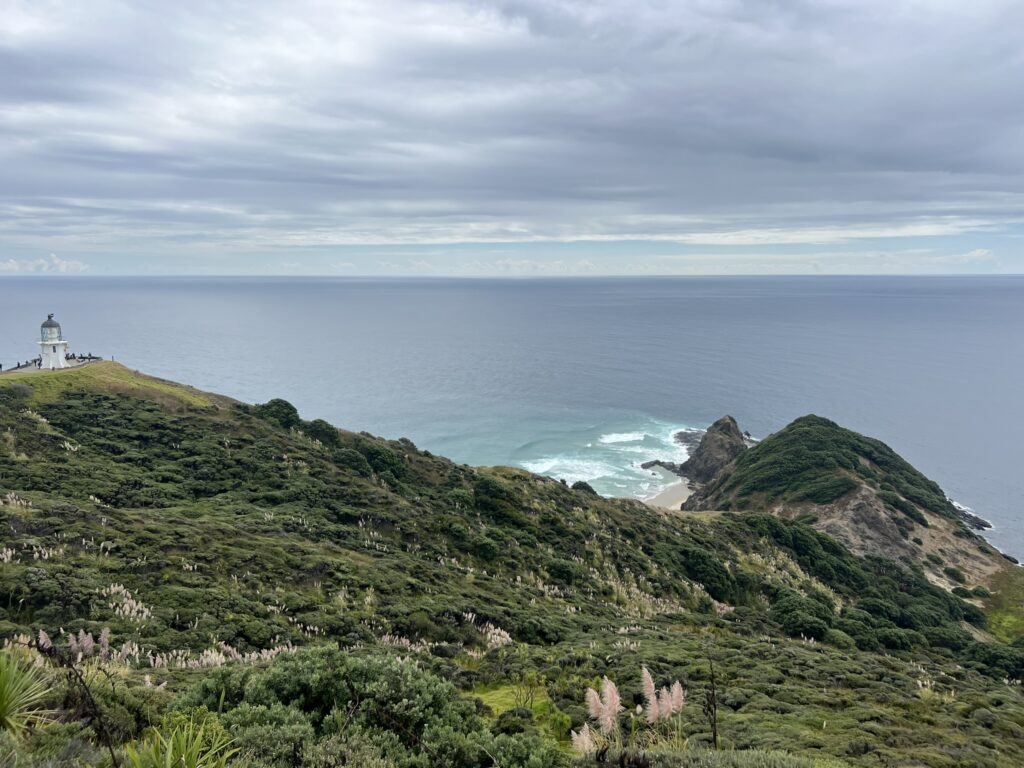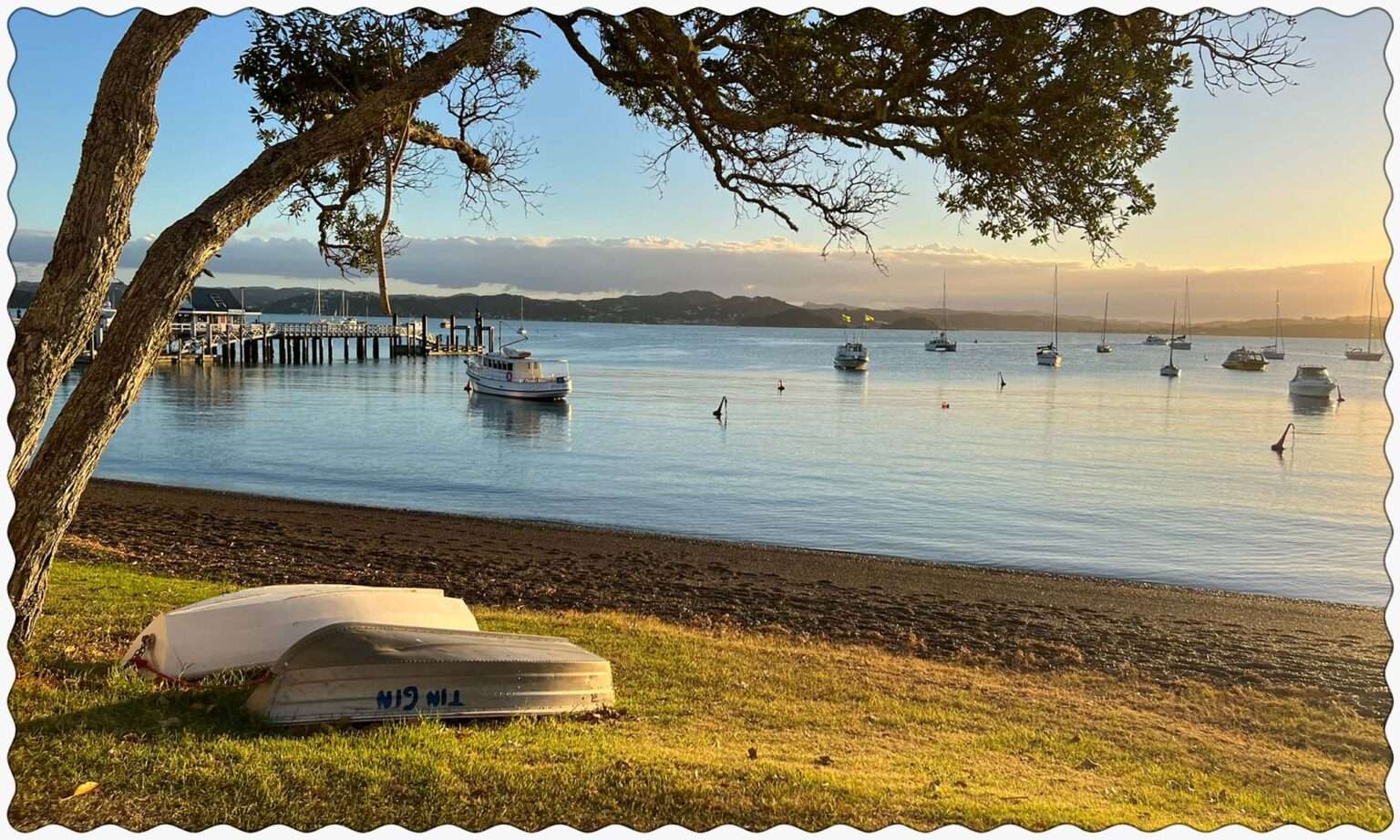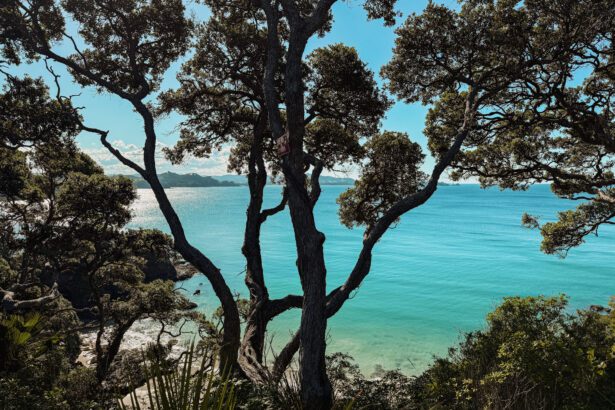Located to the north of Auckland is Northland (Te Tai Tokerau in Maori), the warmest region of New Zealand. Northland is bordered by the Tasman Sea to the west and the Pacific Ocean to the east with the Twin Coast Discovery Highway providing a circular route to traverse both sides of the peninsula. Northland has numerous sandy white beaches, important cultural destinations, and many pristine islands that attract visitors to the region.
Destination Overview
Northland
Whangārei is the largest town in Northland, and is located about 2 hours north of Auckland. The town has the Whangarei Falls, Hundertwasser Art Centre, and is close by to Matapouri Bay, which makes it a great starting point on the Twin Coast Discovery Highway. Paihia, while a smaller town about an hour further north, is a popular place to stay given its location on the Bay of Islands and close proximity to The Waitangi Treaty Grounds. From Paihia, tours take visitors through the Bay of Islands by boat and up to Cape Reinga by special bus to explore the extraordinary natural areas of the region. While the west coast of the peninsula has fewer towns, it includes the special Waipoua Forest which is home to the oldest kauri trees in New Zealand.

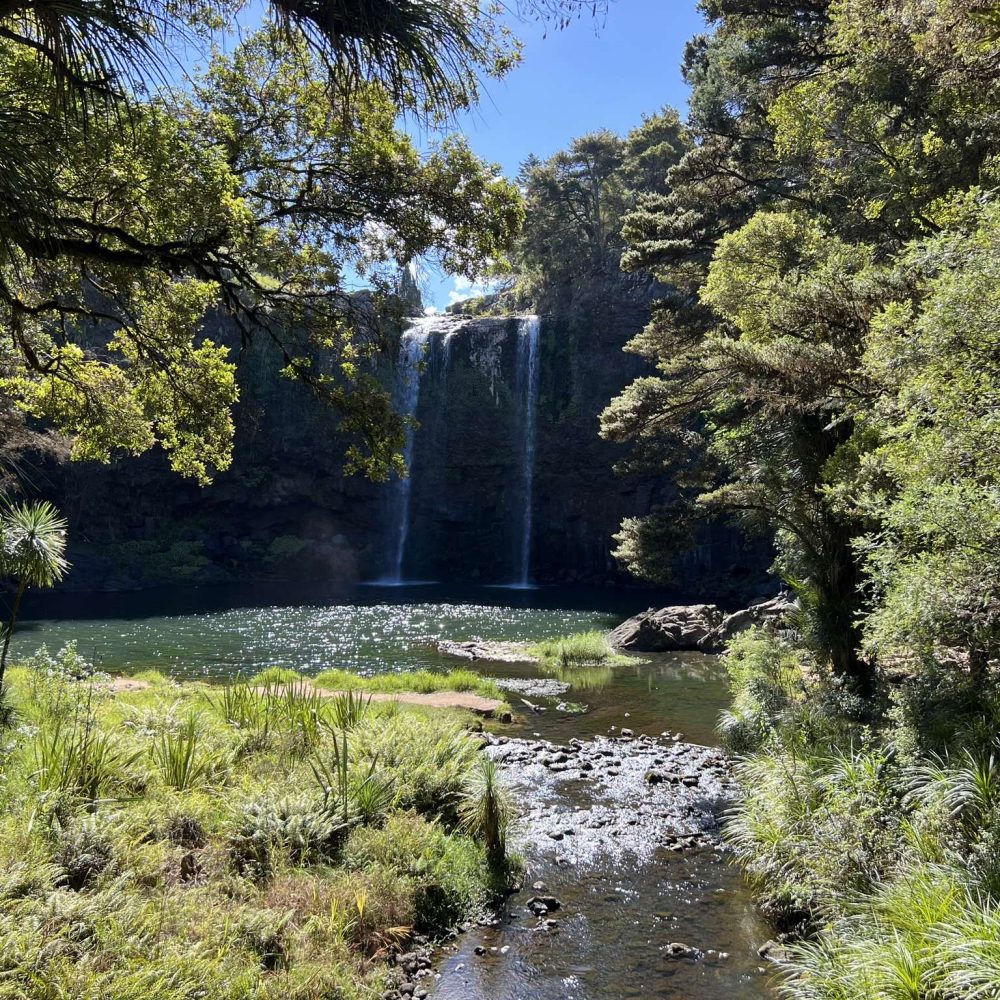
As we headed north from Auckland, the reality started to set in that our road trip around New Zealand was coming to an end. While all places we visit make a lasting impression on us, New Zealand was particularly special and one that exceeded the high bar set by others who had spoken so highly of their visits there. Rather than dwelling on the end of this wonderful trip, we had one more weekend on our journey to look forward to in Northland. This region was one that locals really enjoyed because of its mix of important cultural attractions and amazing nature. Besides visiting those top areas, we also planned to enjoy a last great New Zealand pie, a refreshing L&P, a few CookieTime treats, and at least one more Speights Gold Medal Ale before the end of the trip.
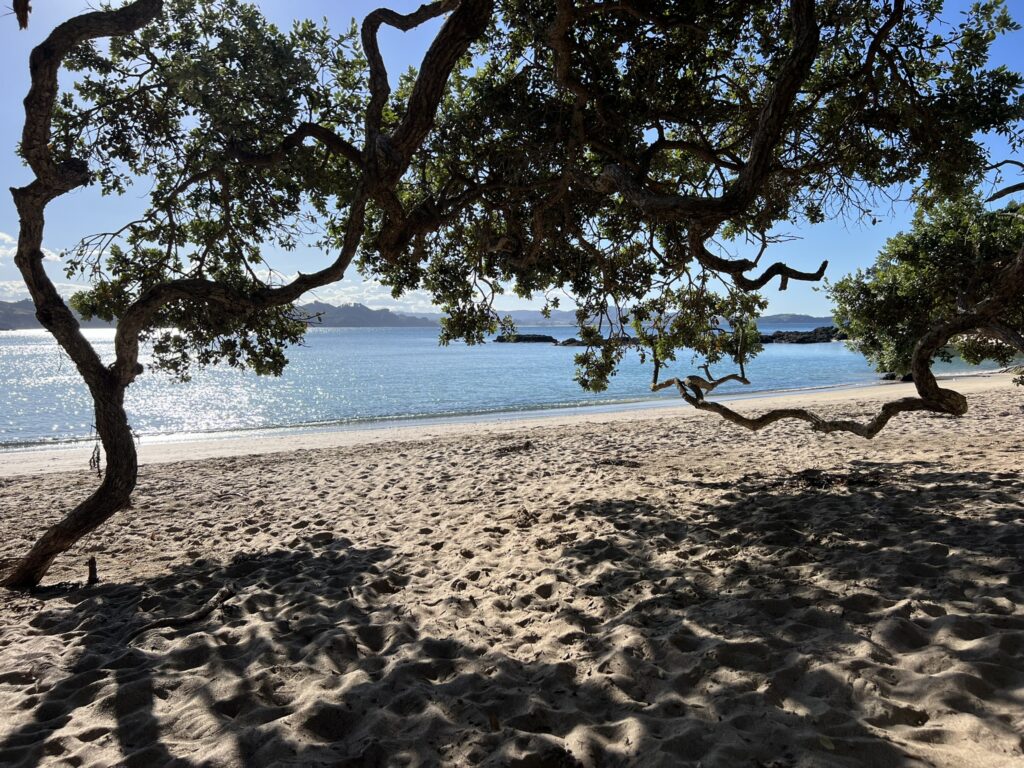
Our plan was to start our drive on the eastern part of the Twin Coast Highway, with an overnight stop at Whangārei. On the way up, the road started to take us over lush green rolling hills and in no time we reached town. We stopped at the Whangarei Falls and found the view from above as well as below to be impressive and a great way to stretch our legs. The main reason we stayed overnight in Whangārei was to visit Matapouri Bay, only about a 30 minute drive from town. When we arrived we had the pristine white sand beach nearly to ourselves, and it was relaxing to spend some time watching the calm waves of the bay. There were some walking trails nearby and decided to follow one to a lookout of the bay. The views were stunning and there was an opportunity to walk down to the even smaller Whale Bay below. After a good walk it was perfect to cool down in the sea, and the waves here were even more relaxing than the previous. The beach itself had great shade from beautiful trees, and it was the perfect place to continue our relaxing afternoon. We drove back to Whangārei but had stayed too long at Matapouri so were unable to visit the Hundertwasser Art Centre. However, the town center was hosting a multi-cultural celebration with various food stalls, music, and dancing from residents that had heritage from all over the world. It was an unexpected event for such a small town but made for a great end to the day and a fun start to our last region of New Zealand.
Where to Read More
Things to Do in Northland, New Zealand (A 4 Day Road Trip Itinerary)
An itinerary discussing the things to do in Northland, New Zealand to take advantage of the landscapes and culture of the overall region.
An Interesting Fact
New Zealand’s Most Important Historic Site is The Waitangi Treaty Grounds
The Treaty of Waitangi (Te Tiriti o Waitangi in Maori) is an important document from 1840 that formally established the relationship between the British Crown and Maori Chiefs. The document was first signed on February 6th by William Hobson in Waitangi, and then was taken around the island to Maori chiefs over the following months. Today the Treaty House where the document was signed is still intact, and the broader grounds have been transformed into an educational complex that helps visitors to discover more about New Zealand’s most important historic site. In addition to the Treaty House there are two museums, a Maori meeting house, and the largest Maori war canoe, all of which can be visited with a general admissions pass that lasts 2 days. The admission price also includes a guided tour as well as a cultural performance to learn even more from experts.
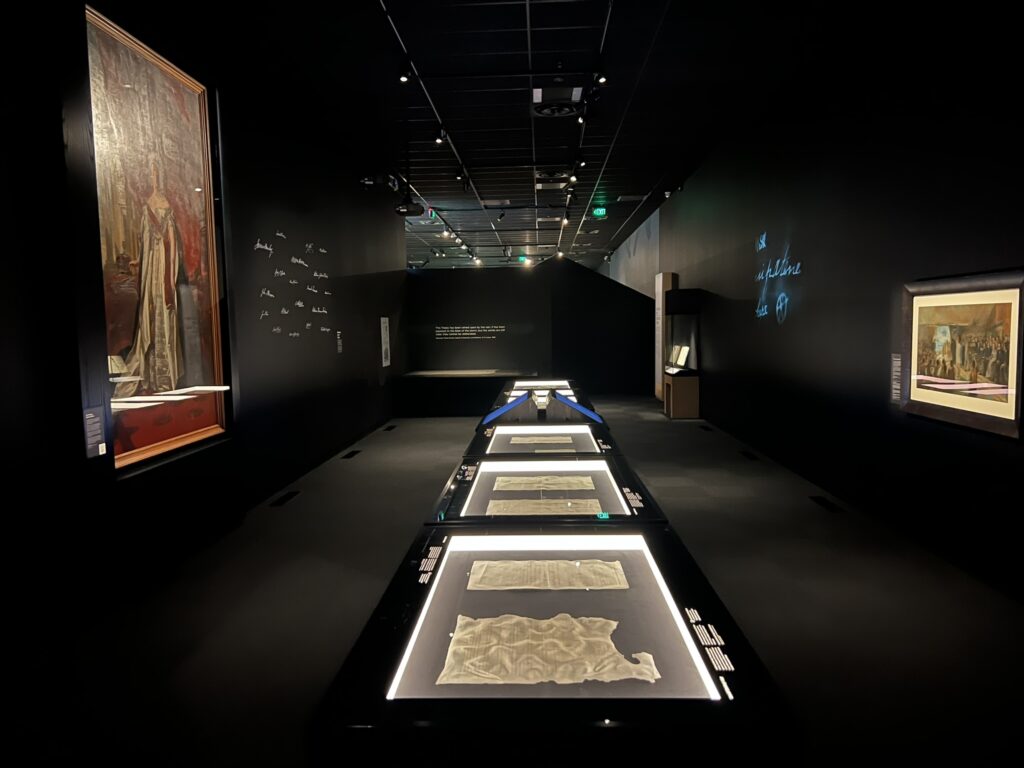
We started our visit to the Waitangi Treaty Grounds by visiting the Museum of Waitangi by ourselves right after opening. The modern museum does an excellent job sharing about the relationship between the Maori and British, who came together to found the nation of New Zealand. One interesting aspect is that the treaty was translated from English to Maori, and had over 500 chief signatures. There was also an English only version that had 39 chief signatures. The problem with the two versions is there were different meanings for an important aspect of the definition of sovereignty and with regards to sale of the Maori lands. These core issues continue to be discussed today and are an important nuance to the history of New Zealand.

After gaining more historical context we joined a guided tour of the Waitangi Treaty Grounds. Our first stop on the tour was Ngā Toki Matawhaorua, the largest Maori war canoe that is still used for special celebrations such as the Waitangi Treaty Day on February 6th. 80 paddlers can power this massive 123 foot (36 meter) canoe, and we learned more about how it was created. After that we went to the Treaty House and the Waitangi Treaty Monument. At the monument we learned it signifies the partnership between the Maori and British, to build the new nation together. Our last stop was at Te Whare Runanga, a Maori meeting house where we were invited in to watch a Maori cultural performance. After an interesting and informative tour, we walked through the Treaty House to see where the initial document was signed and then visited the second museum. The Te Rau Aroha Museum highlights the true price Maori had to pay through war service to be fully recognized as equal citizens. The museum serves as a reminder to the many additional sacrifices the Maori had to give in order to achieve what was promised in the Waitangi Treaty. The visit to Waitangi helped put into perspective our time in New Zealand and give us an even better understanding of the history of the country.
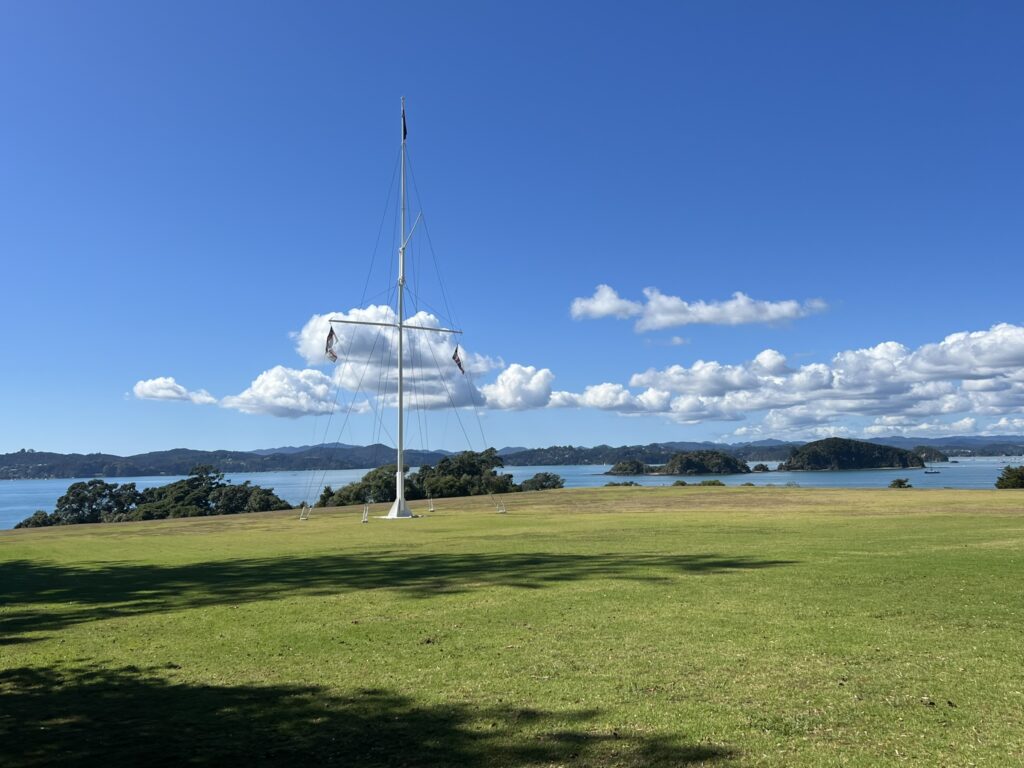
Travel Tip of the Week
Paihia is a Great Base for Touring the Northland Region
Paihia is a small town of only about 2,000 people located on the Bay of Islands. It is a popular place for people to base themselves when visiting Northland. The Waitangi Treaty Grounds are nearby, as are the historic towns of Russell and Kerikeri. In Kerikeri there is the nation’s oldest store and Russell has the iconic Duke Of Marlborough Hotel. While both of these towns are nice to visit, the nature experiences a little further from Paihia are even more impressive. Some of these can be experienced if you have your own boat or 4 wheel drive vehicle, but for most it is easier to join tours to visit them.
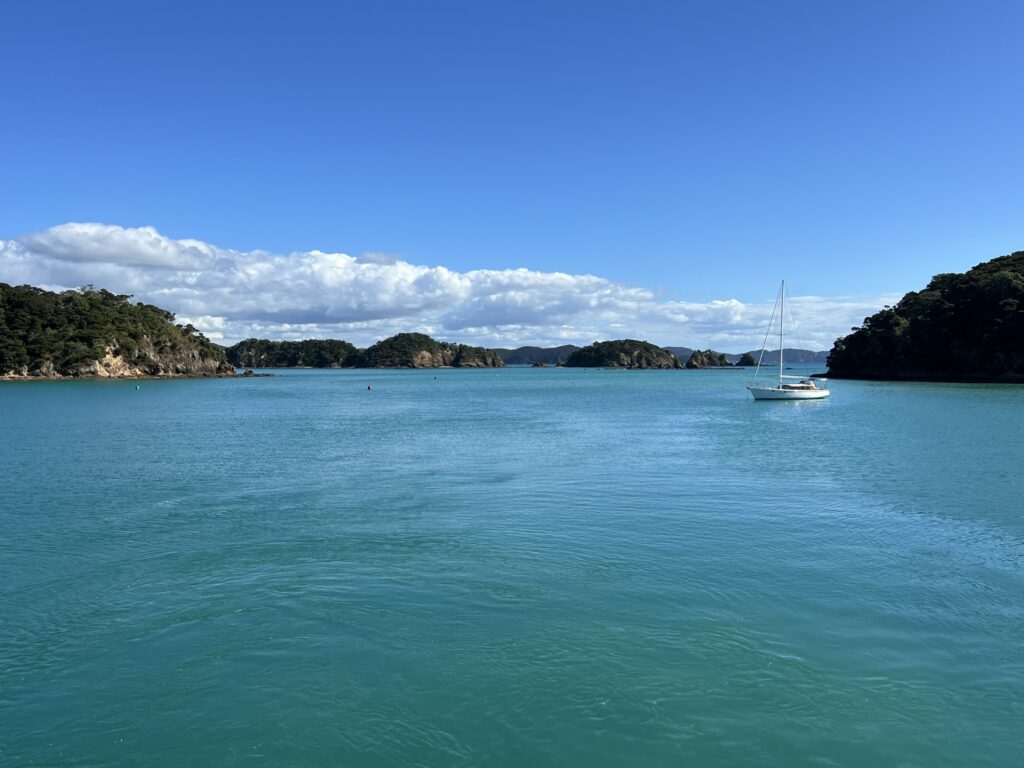
The first of these nature experiences is to cruise through the Bay of Islands out to Hole in the Rock. The journey is a great way to admire the stunning islands and crystal clear water. During our tour with Fuller’s the conditions were calm enough that the captain sailed us through the Hole in the Rock for a memorable perspective of this unique rock formation. As we sailed around the Bay of Islands the boat guide provided information on the significance of different aspects of the area. My favorite part of our tour was when we were dropped off on Urupukapuka Island. Some people chose to hike around the island but we decided to spend our free time on the Otehei Bay. The bay had the ability to rent water equipment to play in the water but also had the Otehei Bay Restaurant serving snacks and drinks. We ordered a few items to share and relaxed on their comfortable lawn patio watching the sun come down over the bay before returning back to Paihia on our boat to conclude a great day on the Bay of Islands.

Another popular nature experience is to take a long day trip up Cape Reinga on a special bus that can drive on the Ninety Mile Beach. Fuller’s offers this as a combination tour with the Bay of Islands cruise so we decided to book with them. The journey from Paihia to Cape Reinga Lighthouse is 3 hours without stopping, so having a professional take you there and back in one day is much less stressful. Riding on the Ninety Mile Beach was a fun experience and something we would not have been able to do with our rental car. The tour guide also brought sand boards, which allowed us to ride down the dunes for a fun activity. When we arrived at the Cape Reinga Lighthouse carpark there were a fair amount of cars there but the walk down towards the end of the peninsula wasn’t too crowded until we reached the lighthouse at the end. Besides the light house there is one lone pohutukawa tree at the tip of the peninsula, where Maori spirits travel to before continuing on to the land of their ancestors. Most people left the lighthouse, and we were some of the last few there. As we stood taking in the spectacular views and enjoying the peaceful calm of Cape Reinga it did feel special. After a long day we returned to the bus, grateful that we did not have to drive the 3 hours back to Paihia ourselves.
